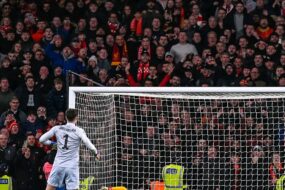
For any soccer enthusiast, the ground beneath the cleats is as crucial as the ball in play; more and more teams are discovering the advantages of turf soccer fields.
Traditional grass fields have been the norm, but in recent years, the emergence of turf soccer fields has created a revolutionary shift in how soccer is played and enjoyed. But what makes turf fields the choice of many, and how does it affect the ultimate expression of skill on the pitch? This article delves into the world of artificial turf soccer fields to unveil their superiority.
Artificial turf comes with a myriad of benefits. It presents consistent playability throughout the year, regardless of weather conditions. A turf field is less impacted by rain and snow compared to a natural grass field. This weather-resistant feature eliminates irksome game cancellations or delays, ensuring that the show goes on!
Turf is also well known for its exceptional durability. It can withstand intensive use without downtime for recovery, unlike natural grass. This increased time of availability allows for extended play-time and a higher number of games and tournaments. It’s an excellent solution for multiple teams or leagues that share one space, offering a resilient surface for incessant matches.
Moreover, maintenance for a turf field is significantly less intensive compared to a natural grass field. No need for mowing, watering, reseeding or fertilizing – a dream come true for groundskeepers! However, note that while turf fields might seem like the perfect choice for everyone, they do require a higher upfront cost. But, the numerous benefits combined with lower ongoing maintenance cost balances the scale.

Advantages of Turf Soccer Fields
1. Reduced Maintenance Costs
Turf soccer fields offer a cost-effective solution for sports facility managers. Unlike natural grass, which requires constant watering, mowing, and fertilization, turf fields demand minimal maintenance. This not only saves money but also ensures that the field remains in top-notch condition throughout the year.
2. All-Weather Usability
One of the primary advantages of turf soccer fields is their ability to withstand various weather conditions. Rain or shine, players can confidently take to the field without worrying about muddy surfaces or waterlogged pitches. This all-weather usability makes turf fields a reliable choice for both professional and amateur soccer enthusiasts.
3. Enhanced Playability
The even surface of turf fields provides consistent ball roll and bounce, contributing to a more predictable and enjoyable playing experience. Players can focus on their skills and tactics without being hindered by irregularities in the playing surface.
Types of Turf Soccer Fields
- Artificial Turf
Artificial turf is composed of synthetic fibers, typically made from polyethylene or polypropylene. This type of turf offers a uniform and durable playing surface, resembling natural grass without the need for constant upkeep. It is a popular choice for soccer fields at all levels.
- Hybrid Turf Systems
Hybrid turf combines natural grass with synthetic fibers. This system aims to maintain the benefits of natural grass while enhancing durability and playability. Some professional soccer stadiums opt for hybrid turf to achieve the perfect balance between tradition and innovation.
Installation Process
- Site Preparation
Before installing turf, proper site preparation is crucial. This involves clearing the area, ensuring proper drainage, and creating a stable foundation for the turf system.
- Base Installation
A robust base layer, typically made of gravel or crushed stone, is essential for the longevity of the turf. It provides stability and drainage, preventing issues such as water accumulation or uneven surfaces.
- Turf Installation
The turf is meticulously installed over the base layer, with each seam and joint secured to create a seamless playing surface. The installation process is a critical step that determines the quality and lifespan of the turf field.

Maintenance Tips
- Regular Cleaning
While turf fields require less maintenance than natural grass, regular cleaning is still essential. Removing debris, leaves, and any foreign materials ensures the longevity of the turf and maintains its appearance.
- Brushing and Aerating
Periodic brushing helps to keep the turf fibers upright and evenly distributed. Aerating the field allows for better drainage and prevents compaction, ensuring optimal playability.
- Repairing Damages
Promptly addressing any damages, such as tears or loose seams, is crucial for preventing further issues. Regular inspections and quick repairs contribute to the overall durability of the turf.

Cost Considerations
- Initial Installation Costs
While the initial installation of a turf soccer field may have higher upfront costs compared to natural grass, the long-term savings in maintenance and upkeep often outweigh the initial investment.
- Long-Term Savings
The reduced need for water, fertilizers, and constant maintenance translates to significant long-term savings. Turf fields prove to be a financially sensible choice for sports facilities looking to optimize their budget.
Environmental Impact
- Comparing Natural Grass and Turf
Turf fields present a more eco-friendly option when compared to natural grass. The reduction in water usage, elimination of harmful pesticides, and lower carbon footprint contribute to a more sustainable playing surface.
- Sustainable Turf Options
Advancements in turf technology have led to the development of sustainable options, including recycled materials and eco-friendly infills. These innovations aim to minimize the environmental impact of turf soccer fields.
Player Safety
- Shock Absorption Features
Turf fields are designed with shock absorption features, reducing the impact on players’ joints and minimizing the risk of injuries. This player-centric approach makes turf fields a preferred choice for those prioritizing safety.
- Injury Prevention Measures
The even and consistent surface of turf fields helps prevent common injuries associated with uneven playing surfaces. With proper installation and maintenance, turf fields contribute to a safer soccer playing environment.
Professional Soccer Teams and Turf Fields
- Success Stories
Numerous professional soccer teams around the world have embraced turf fields for their training facilities and home stadiums. The success stories of these teams attest to the positive impact of turf on player performance and overall team success.
- Player Testimonials
Players often express their preference for playing on turf due to the predictable surface and enhanced playability. Testimonials from professional athletes highlight the positive experiences and benefits of transitioning to turf fields.
Community Impact
- Increased Accessibility
Turf soccer fields contribute to increased accessibility for soccer enthusiasts of all ages. The ability to use the field in various weather conditions and minimal maintenance requirements make turf fields an attractive option for community sports programs.
- Hosting Events and Tournaments
The reliability and versatility of turf fields make them ideal for hosting events and tournaments. Communities can showcase their soccer talent and attract visitors, boosting local economies and fostering a sense of community pride.
Turf Soccer Field Trends
- Technological Advancements
Ongoing research and technological advancements in turf technology continue to shape the landscape of soccer playing surfaces. Innovations in materials, infills, and customization options cater to the evolving needs of players and sports facilities.
- Customization Options
Turf fields now offer customization options, allowing sports facilities to incorporate logos, colors, and unique designs. This level of personalization adds a distinctive touch to each soccer field, creating a visually appealing and branded environment.
Common Misconceptions
Addressing Myths about Turf Fields
- Myth 1: Turf is a blazing inferno in the sun.
While traditional turf can get warmer than natural grass, advancements in technology have introduced cooler infill materials and shade-providing blades. Additionally, proper irrigation practices can significantly regulate surface temperature. Think of it as a high-tech sunblock for your feet!
- Myth 2: Turf tears your cleats to shreds.
Modern turf, particularly high-performance varieties, are designed with player safety in mind. They provide optimal grip while minimizing abrasion – your precious cleats will thank you! Of course, choosing the right footwear for the specific turf type is always key.
- Myth 3: Turf is an environmental villain.
The reality is more nuanced. Early generations of turf did pose environmental concerns. However, responsible manufacturing, recycling programs, and sustainable infill materials are rapidly shrinking the ecological footprint. Additionally, the reduced water usage and maintenance needs compared to natural grass offer environmental benefits.
- Myth 4: Turf feels like playing on concrete.
Gone are the days of rock-hard, unforgiving synthetic surfaces. Contemporary turf mimics the feel of natural grass, providing comfort and shock absorption for players. Imagine a plush green carpet you can actually slide on.
- Myth 5: Turf is just for pros and fancy facilities.
Not at all! Turf fields are becoming increasingly accessible to recreational players and community organizations. Their versatility makes them ideal for multi-sport use, maximizing their value and community impact.
- Myth 7: Turf Fields Are Abrasive
Modern turf fields prioritize player safety. Shock pads and soft infill materials are integrated to minimize friction and cushion impacts, dispelling concerns about abrasiveness and reducing the likelihood of injuries or infections.
Future Developments in Turf Technology
The world of turf soccer fields isn’t standing still. Researchers and innovators are constantly pushing the boundaries, focusing on several key areas:
- Enhanced Durability: New materials and construction techniques are making turf systems even tougher, extending their lifespan and reducing maintenance costs. Think of it as an investment that keeps on giving.
- Improved Playability: Manufacturers are fine-tuning blade designs and infill materials to ensure optimal ball bounce, traction, and overall playing experience. Picture yourself dribbling like Messi on a perfectly manicured pitch.
- Sustainable Solutions: Eco-friendly infill options, responsible manufacturing practices, and recycling programs are minimizing the environmental impact of turf fields. Remember, green play can also mean green initiatives.
- Improving Synthetic Fibers and Coatings: Researchers are dedicated to enhancing the quality and durability of synthetic fibers, ensuring turf fields have a longer lifespan and increased resilience against wear and tear.
- Innovations in Infill Materials and Additives: The development of new infill materials and additives seeks to mimic the natural characteristics and behavior of grass, creating a more authentic playing experience on turf fields.
- Integration of Sensors and Smart Devices: The incorporation of sensors and smart devices into turf technology enables real-time monitoring and optimization of field conditions. This not only improves maintenance efficiency but also ensures optimal playing conditions for soccer enthusiasts.
Predictions for the Future
Considering evolving technologies, environmental concerns, and user preferences, several predictions can be made for the future of turf soccer fields:
- Growing Global Demand for Turf Fields
As awareness of the benefits of turf fields spreads, the global demand is expected to rise, with an increasing number of sports facilities opting for this reliable playing surface.
- Competition and Collaboration Among Manufacturers
The turf industry is likely to witness heightened competition and collaboration among manufacturers and suppliers, fostering innovation and pushing the boundaries of turf technology.
- Opportunities and Challenges for Turf Users
Emerging opportunities, such as customized playing experiences and environmentally sustainable options, will present themselves alongside challenges that necessitate continuous research and development.
Turf soccer fields have transformed the landscape of soccer playing surfaces, offering advantages in terms of cost, playability, and environmental impact. From professional stadiums to community sports facilities, the adoption of turf fields continues to grow, positively impacting players and communities alike.
Frequently Asked Questions – FAQs
1. Are turf soccer fields suitable for all weather conditions?
– Yes, one of the key advantages of turf fields is their all-weather usability, providing a consistent playing surface in various conditions.
2. Do turf fields require less maintenance than natural grass?
– Absolutely, turf fields demand minimal maintenance compared to natural grass, resulting in long-term cost savings.
3. Are there eco-friendly options for turf soccer fields?
– Yes, advancements in turf technology have led to the development of sustainable options, minimizing environmental impact.
4. Do professional soccer players prefer playing on turf?
– Many professional players express their preference for turf due to its consistent surface and enhanced playability.
5. Can turf fields be customized with logos and unique designs?
– Yes, modern turf technology allows for customization, enabling sports facilities to create visually appealing and branded environments.
6. Are turf soccer fields safe for children?
– When properly maintained and used with appropriate footwear, turf soccer fields are generally safe for children. In fact, their consistent surface can even reduce the risk of certain injuries compared to natural grass.
7. How much does it cost to install a turf soccer field?
The cost of installing a turf field can vary significantly depending on the size, type of turf, and installation process. However, the long-term cost savings on maintenance and water usage can make it a worthwhile investment for many facilities.
8. Can I convert my natural grass field to turf?
Yes, converting a natural grass field to turf is definitely possible. The process typically involves removing the existing sod, preparing the ground, and installing the new turf system.
9. What are the latest advancements in turf technology?
Some of the latest innovations include cooling technologies, shock-absorbing infill materials, and even self-healing turf blades. The future of turf is looking greener than ever!
10. How can I choose the right turf for my needs?
Consider factors like your budget








